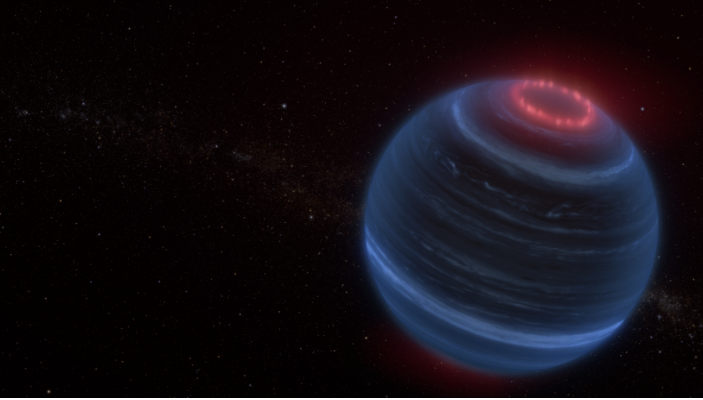NASA's James Webb Space Telescope is back at it again with its bizarre and dazzling discoveries and this year, it spotted a brown dwarf known as W1935 to sport an aurorae on top of it. However, one of the main catches is that Webb did not find a host star nearby to help cause this aurora to form, and is now mystifying researchers in this latest spotting of this methane emission.
NASA James Webb Finds Aurora from Brown Dwarf

The latest discovery of the James Webb Space Telescope centered on brown dwarves, where it studied as many as 12 of them. However, there were two that had similar compositions, appearing like twins, with the W1935 and the W2220, having the same brightness and temperature as well.
However, their differences centered on the brown dwarf W1935 having significant methane emissions, the first auroral candidates outside the Solar System. It is also the coldest auroral candidate on the list outside of the system, with a temperature of about 200 degrees Celsius, with Jupiter known to be warmer by more than 300 degrees Celsius.
Using Webb's NIRSpec, NASA and the ESA shared the characteristics of these latest discoveries, citing that it is missing one key component that is known to bring aurorae to planets in the Solar System.
Bizarre Aurora: Brown Dward Lacks Host Star
The bizarre characteristic of W1935 is its lack of a host star, and this is unlike the Earth, Jupiter, Saturn, and the other four planets in the Solar System that share the Sun.
That being said, stellar winds contribute to producing said aurorae on the home planet and those nearby, and this is caused by the Sun's emissions that coincide with the magnetic poles like the one found on the northern side of the Earth.
Researchers of previous observations take this bizarre appearance of aurora outside the Solar System to be part of radio emission from warmer brown dwarf to be the most likely explanation, but their studies proved to be inconclusive.
Webb's findings were shared at the 243rd meeting of the American Astronomical Society.
Auroras and their Cosmic Presence
For many years, it has been a tourist destination to head on over to certain locations on the planet where auroras are sure to appear, and this is near magnetic poles in different parts of the planet. One of the surest places where auroras emerge is in the Nordic countries, particularly in Iceland, where last year, a bright show of lights danced over the Godafoss waterfalls, captured by NASA.
However, it is not exclusive to the Earth only, as other planets that have a host star nearby and strong magnetic forces also display these dancing lights, more commonly known to humans as the "Northern lights."
Back in 2021, the probe sent by the United Arab Emirates to Mars captured the Red Planet's unique appearance of auroras across the Martian landscape but is one that challenged the researchers to capture here.
The Brown Dwarf W1935 displayed an aurora that resembles that of the planet without a host star, and it baffles scientists with this latest discovery by Webb, piecing together an accepted explanation for why such displays appeared.

ⓒ 2025 TECHTIMES.com All rights reserved. Do not reproduce without permission.




